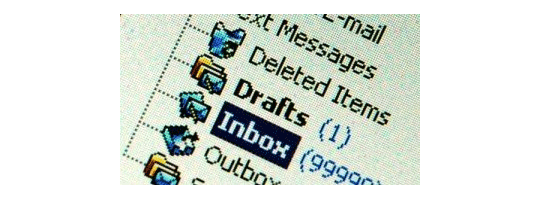Every salesperson and marketer wants to know, "When is the best time to send email?" We spend hours crafting our email campaigns and sales emails, creating copy and messages that we know will get a response—if they're seen. We need our recipients to open our emails in order to engage.
But so many emails go unseen, thanks to the sheer number of emails individuals receive daily. On any given day, our prospects are dealing with 100+ messages in their inboxes. Wouldn't it be nice to know that magic time to send, to optimize our chances of getting a response?
Studies Don't Agree On the Ideal Time to Send
Because email marketing works and because salespeople rely on email in an age of robust voicemail use, there have been hundreds of studies done on what time to send email. If you Google "What's the best time to send sales emails?" or "Best time to send email campaign," you'll get a thousand different answers, some even directly conflicting!
Mailchimp's most recent study says weekdays are much better than weekends, with Monday through Thursday being ideal. Yesware's most recent study shows that open and click rates are highest on Saturday and Sunday. GetResponse says you should send email in the afternoon. Lifehacker says you should send between 6:00 a.m. and 7:00 a.m.
So What's the Real Answer?
We've found through our own A/B testing on multiple client accounts that the answer is actually quite logical when you think about it: there is no one perfect time. The best time to send email is the time that's right for each individual.
No one has the same email habits—we each develop our own. Some people check email when they first wake up at 5:30 a.m., reply when they get to the office, and then don't check it the rest of the day. Some people check email every hour, but don't really read and respond until 1:00 p.m. and then again at 5:00 p.m. Some people check email at lunchtime and send all their replies then. The range of email habits is endless.
The Best Time to Send is When Each Individual Is Ready to Read and Respond
If there was indeed one best time to send sales emails, every marketer and salesperson would send email at that time, and everyone's inboxes would flood at the same day and time each week. Thankfully, that's not reality.
If you want to get a response to your email, you need to personalize your delivery times. Let's take a look at two case studies to see in concrete terms what we mean.
LeadG2, a HubSpot Platinum Agency Partner, was taking guesses at the best time to send. They primarily sent their campaigns and client communications on Tuesdays or Wednesdays at 1:00 because the open rates were better than other times they'd tried. But they weren't happy with their open rates, and they continued getting dozens of hard bounces each time they sent a large mailing, due to corporate email systems kicking back mass-delivered campaigns. When they began sending campaigns and communications through Seventh Sense, they saw a 26% open rate increase and a 22% click rate increase. And their number of hard bounces diminished to almost none.
Clearpath, a technology services company, had been delivering their emails based on a lot of intuition around timing as well. They found that either 10:00 a.m. or 2:00 p.m. on Tuesdays and Thursdays received the most engagement, so they tended to stick with those days and times. But although they were connecting with a larger number of people at their ideal email time than other date and time combinations, they were missing lots of recipients because their ideal time was different. When Seventh Sense came in and they started delivering their emails over the course of a day at the most optimal times, they saw a 12% open rate increase and a 96% click rate increase.
If you want your email campaigns and communications to be effective, you first need to get people to open them. And your real goal is to get people to engage with your content—whether that means clicking through to read an article, downloading an eBook, or responding to a sales email. There's no one best time to send a mass email campaign, because each recipient has his or her own email habits. The best way to get engagement and receive a response is through personalizing the delivery time.






